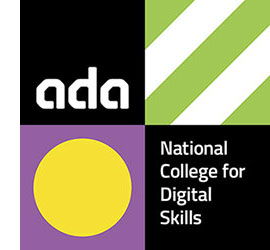Technology in the Maths A Level - a welcome focus
06 July 2017
 At Ada, the National College for Digital Skills, we are breaking new ground in the teaching of mathematics and computer science. A cutting-edge community of digital thinkers, industry experts and leading tech companies, we develop the mindsets, skill sets and character needed for students to be pioneers, with teaching methods rooted in the real world.
At Ada, the National College for Digital Skills, we are breaking new ground in the teaching of mathematics and computer science. A cutting-edge community of digital thinkers, industry experts and leading tech companies, we develop the mindsets, skill sets and character needed for students to be pioneers, with teaching methods rooted in the real world.
When we were considering A Levels for our students, we decided that the new OCR A Level Mathematics B (MEI) specifications, which genuinely reward understanding and value the use of technology, were a clear best fit for our curriculum.
OCR and MEI really seem to have taken to heart the DfE requirement that ‘the use of technology should permeate the study of A Level mathematics’ in their specifications. This shows particularly with the inclusion of the Further Pure with Technology option.
This DfE requirement also resonates strongly with our belief at Ada that learning maths through coding and coding through maths can enable students to be explorers and constructors of their own mathematical understanding.
That’s why we welcome the opportunity that the OCR A Level Maths B (MEI) specifications provides for all.
As part of their BTEC Computer Science, all of our students learn at least two programming languages, and this is then leveraged in maths. One of these is Python – a great language for mathematical and statistical exploration.
We are also really glad that OCR and MEI have thought hard about their data sets and come up with an interesting and varied selection that reflects real-world contexts. Part of our mission at Ada is to get students working on industry-led projects that present an authentic context in which to solve problems. In the digital sector, this frequently means exploring, analysing, visualising and interpreting data drawn from enormous and complex data sets.
Could it go even further?
However, while the increased emphasis from the DfE on technology in the new specification is welcome, and goes some way toward reflecting real-world mathematical practice, it still does not go as far as we would have liked. If technology should permeate the study of maths then surely it should underpin its assessment? Under the current arrangements, students are only permitted use of a calculator rather than the full power and flexibility of a programming language. OCR and MEI’s Further Pure with Technology minor is the only maths exam to challenge this.
We hope that by sharing our curriculum with OCR and MEI, we can provide a model of how technology can not just permeate, but enrich and extend the study of mathematics. We also hope that this will encourage an even bolder approach to the design of future specifications, giving learners an experience that more closely resembles maths as it is really used by everyone from pure mathematicians to games designers to financial technology professionals.
Want to know more about our A Levels?
Planning to teach our Mathematics or Further Mathematics A Levels? Let us know so we can make sure you have everything you need. We’d love to hear your thoughts in ‘comments’ below. If you have any questions, get in touch with us by email at maths@ocr.org.uk or on Twitter @OCR_Maths.
About the author
 Ian Dickerson
Ian Dickerson
Head of Mathematics, Ada National College for Digital Skills
Ian has taught in London state schools since 1998. Before joining the founding team at Ada College, he was responsible for designing and delivering the Early Adopter Teaching Pilot Project for the new Core Maths qualification at the LaSWAP consortium in North London. He also taught for over a decade at Stoke Newington School and Sixth Form, where as KS5 coordinator he led the development of A Level Maths and Further Maths from a minority choice to a popular and successful suite of courses.
twitter.com/mathsian
Ada, the National College for Digital Skills, was the first new FE college to open in over 20 years.
adacollege.org.uk